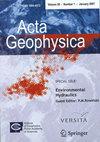Flood vulnerability assessment of buildings using geospatial data and machine learning classifiers
Abstract
Quantifying a building's vulnerability to flooding is crucial for implementing effective structural mitigation strategies. Detailed conventional onsite building damage assessment methods can be time-consuming and unsuitable for rapid assessments, with geospatial data providing a more up-to-date alternative. This study aimed to assess the physical flood vulnerability of buildings in Kota Bharu, Kelantan, Malaysia, using a combination of geospatial data and several machine learning classifiers. A detailed land use and cover classification was performed using high-spatial-resolution satellite imagery and airborne LiDAR to identify affected buildings in the area. Building parameters (height and area) and relevant image features were obtained from the building footprint in the geospatial data and used to classify the vulnerability index with the machine learning classifiers. The estimated vulnerability results were validated using in situ building damage data from previous flood events. The results showed that the combination of geospatial data and the machine learning framework achieved 95% accuracy using the random forest classifier and digitised building footprint. Furthermore, building size was found to be the most important factor in determining vulnerability. This geospatial-based approach to building vulnerability assessment demonstrated a good correlation with in situ flood vulnerability data, indicating its feasibility for rapid and large-scale building flood vulnerability assessments.


 求助内容:
求助内容: 应助结果提醒方式:
应助结果提醒方式:


